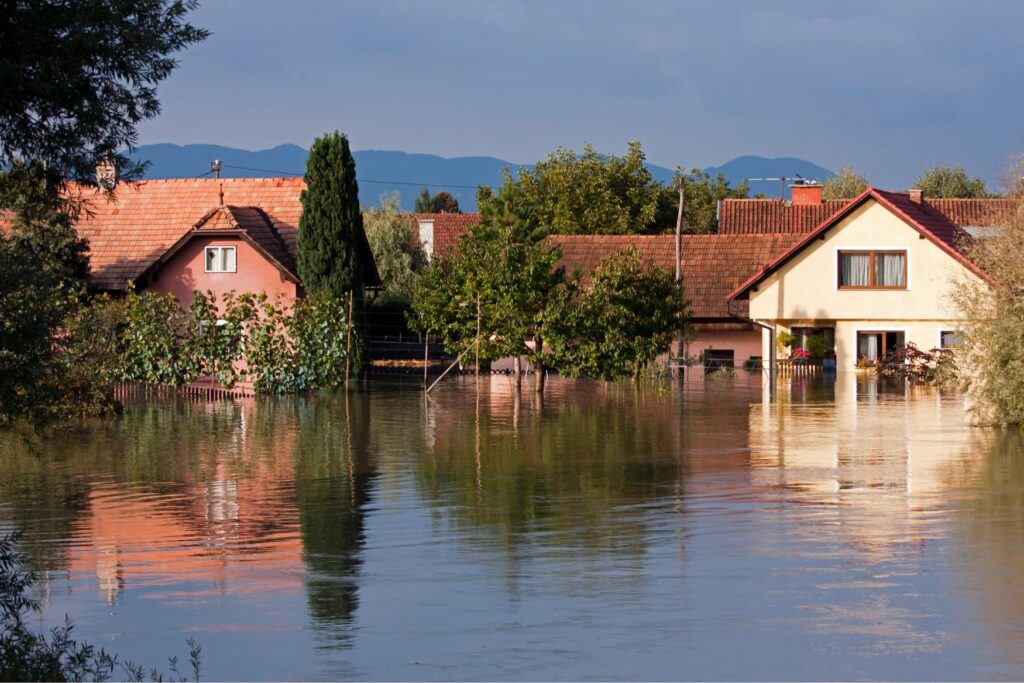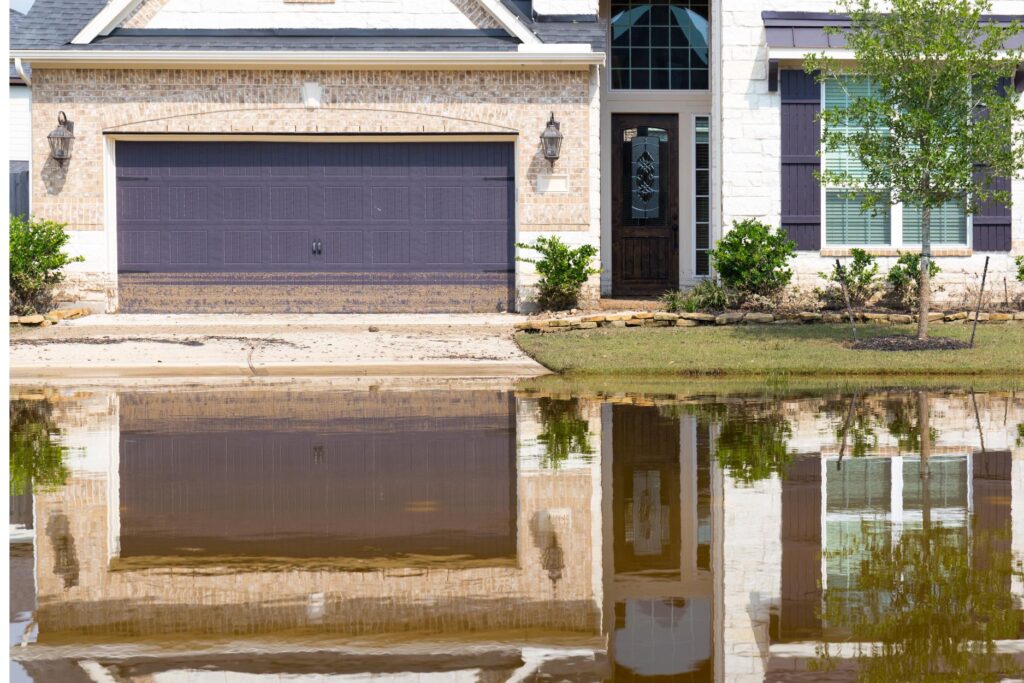Contents
Have you ever wondered how sustainable landscape design and maintenance could transform the way we interact with outdoor spaces? By exploring new methods like eco-friendly plant selection, water conservation techniques, and organic pest control, you can greatly diminish your environmental footprint while creating stunning and flourishing landscapes. But that’s just the start. Stay tuned to discover how these sustainable solutions can benefit the environment and improve the overall well-being of your outdoor living areas.
Eco-Friendly Plant Selection
When embarking on eco-friendly landscape design, selecting environmentally conscious plants is a crucial initial step towards creating a harmonious and environmentally conscious outdoor space. Opting for indigenous plants is a wise decision as they’re well-suited to the local climate, soil, and wildlife, reducing the need for excessive watering, fertilizers, and pesticides. These plants have naturally adapted to the region, making them robust and low-maintenance, which contributes to a more environmentally friendly landscape in the long run.
Integrating a variety of plant species in your design enhances visual interest and fosters biodiversity. Varied plantings attract a range of beneficial insects, birds, and other wildlife, establishing a balanced ecosystem within your garden. Additionally, blending different plant heights, textures, and colors can elevate the aesthetic appeal of your outdoor space while providing habitats and food sources for local fauna.
Consider choosing plants that are resilient to drought and require minimal water once established. These species are ideal for regions susceptible to water scarcity or restrictions, assisting in water conservation and reducing your ecological footprint.
Moreover, selecting plants that support pollinators, such as bees and butterflies, can contribute to the well-being of local ecosystems while adding vibrancy and vitality to your landscape.
Water Conservation Techniques
When addressing water conservation techniques in landscape design and maintenance, it’s crucial to incorporate drip irrigation systems. This method delivers water directly to the roots of plants, reducing water waste and promoting healthier growth.
Furthermore, integrating xeriscaping principles can aid in reducing water usage by choosing drought-resistant plants and designing landscapes that need minimal irrigation.
Drip Irrigation Systems
For efficient water conservation in landscape design and maintenance, implementing drip irrigation systems stands out as an eco-friendly solution. Drip irrigation systems deliver water directly to the base of plants, minimizing evaporation and runoff. By providing a slow and steady supply of water to the roots where it’s needed most, these systems help in reducing water waste significantly.
Drip irrigation also promotes healthier plant growth by preventing foliage from getting wet, which can lead to diseases.
One of the groundbreaking aspects of drip irrigation systems is their adaptability to various landscapes and plant types. Whether you have a small garden or a large commercial property, drip irrigation can be customized to meet your specific needs. Additionally, these systems can be automated, saving you time and effort in manual watering while ensuring consistent hydration for your plants.
Xeriscaping Principles
To enhance water usage in landscaping, incorporating xeriscaping principles can transform your approach to water conservation techniques. Xeriscaping is an eco-friendly landscaping method that focuses on reducing the need for supplemental water, making it an environmentally conscious choice. By implementing xeriscaping principles, you can create a beautiful and thriving landscape while conserving water resources.
Here is a table outlining the key xeriscaping principles:
| Xeriscaping Principles | Description |
|---|---|
| Planning and Design | Designing landscapes with water-saving techniques in mind. |
| Soil Improvement | Amending soil to enhance water retention and reduce evaporation. |
| Efficient Irrigation | Using drip irrigation or soaker hoses to deliver water directly to plant roots. |
| Native Plants | Drough irrigation or soaker hoses are used to deliver water directly to plant roots. |
| Mulching | Choosing plants that are adapted to the local climate and require less water. |
Incorporating these principles into your landscaping can help you create an eco-conscious and water-efficient outdoor space that thrives while reducing water consumption.
Organic Pest Control Methods
Implementing effective natural pest control methods is crucial for maintaining a healthy and thriving landscape. By utilizing eco-friendly solutions to manage pests, you can protect your plants, soil, and the environment.
One inventive technique is companion planting, where you strategically grow plants that naturally repel pests near those that are vulnerable. For example, planting marigolds alongside vegetables can deter harmful insects. Introducing beneficial insects like ladybugs and lacewings can also help manage pest populations organically. These insects prey on common garden pests, reducing the reliance on chemical interventions.
Promoting biodiversity in your landscape is another essential aspect of natural pest control. Varied plantings attract a range of beneficial insects and birds that feed on pests. Moreover, practicing good garden cleanliness by removing debris and weeds can eliminate hiding places for pests. Neem oil, a natural pesticide derived from the neem tree, is effective against a broad spectrum of insects and is safe for beneficial insects.
Regularly monitoring your landscape for signs of pest infestations allows for early intervention, preventing extensive damage. Integrated Pest Management (IPM) techniques focus on prevention, monitoring, and control, prioritizing the least harmful methods first. By integrating these eco-friendly pest control methods into your landscape maintenance routine, you can establish a balanced environment where plants can thrive without the need for harsh chemicals.
Sustainable Irrigation Systems
When considering eco-friendly irrigation systems for your landscape design, incorporating water-efficient drip systems can greatly reduce water waste by delivering water directly to the roots of plants.
Additionally, implementing rainwater harvesting techniques can help you collect and store rainwater for later use, reducing the dependence on traditional water sources.
These creative approaches promote water conservation and contribute to a more environmentally friendly and cost-effective landscape maintenance strategy.
Water-Efficient Drip Systems
For eco-friendly landscape design and maintenance, water-conserving drip systems offer a modern solution to efficient irrigation practices. Drip systems provide precise watering directly to the roots of plants, minimizing water waste through evaporation or runoff. By delivering water slowly and precisely, drip systems help conserve water while promoting healthier plant growth. These systems are also versatile and easily adjustable to accommodate different plant types and watering needs in your landscape design.
One key advantage of drip systems is their ability to reduce weed growth by specifically watering plants and not the surrounding soil. This targeted approach saves water and decreases the need for harmful herbicides.
Additionally, drip systems can be automated with timers, ensuring consistent watering schedules without the need for manual intervention.
Incorporating water-efficient drip systems into your landscape design promotes sustainability and enhances your plants’ overall health and vigor. By embracing this innovative irrigation technology, you’re taking a significant step towards creating a more environmentally conscious and thriving outdoor space.
Rainwater Harvesting Techniques
To enhance eco-friendly irrigation practices in your landscape design, consider integrating rainwater harvesting techniques as a proactive approach towards water conservation and efficiency. Rainwater harvesting involves collecting and storing rainwater runoff from roofs and other surfaces for later use in irrigation. This technique reduces your reliance on traditional water sources and helps mitigate stormwater runoff, erosion, and pollution.
There are various rainwater harvesting systems you can incorporate into your landscape design. A simple rain barrel connected to a downspout can collect rainwater for small-scale irrigation needs.
For larger landscapes, consider installing underground cisterns or above-ground tanks to store larger quantities of rainwater. These systems can be equipped with filters to remove debris and contaminants, ensuring the water used for irrigation is clean and safe for your plants.
Native Plant Landscaping Ideas
Explore the beauty and benefits of incorporating indigenous plants into your landscape design. Native plant landscaping offers a unique opportunity to create a thriving and flourishing ecosystem in your outdoor space. By choosing plants that are native to your region, you support local biodiversity while also reducing the need for excessive watering, fertilizers, and pesticides.
When selecting native plants for your landscape, consider factors such as sunlight exposure, soil type, and water availability. For a vibrant splash of color, you could opt for the vivid blooms of Black-eyed Susans or the dainty petals of Purple Coneflowers. To attract pollinators like butterflies and bees, include Butterfly Weed or Bee Balm in your garden beds. For a touch of greenery, indigenous grasses like Switchgrass or Little Bluestem can add texture and movement to your landscape.
Incorporating native plants into your landscape design enhances the aesthetic appeal of your outdoor space and contributes to the overall health of the environment. These plants have evolved to thrive in their specific habitats, making them low-maintenance and resilient choices for landscaping. Embrace the beauty of indigenous plant landscaping and create a harmonious outdoor sanctuary that fits perfectly within its surroundings.
Composting for Soil Health
Enhancing soil health through composting is a fundamental practice in eco-friendly landscape management. Composting is a simple yet powerful way to recycle organic waste and enrich the soil in your garden. By creating a compost pile, you can transform kitchen scraps, yard trimmings, and other organic materials into a nutrient-rich soil amendment that improves soil structure, fertility, and overall health.
Composting reduces the amount of waste sent to landfills, helps retain moisture in the soil, promotes beneficial microorganisms, and reduces the need for chemical fertilizers. To start composting, you can use a designated bin or a simple pile in your backyard. Layering green materials like fruit and vegetable scraps with brown materials such as leaves or cardboard creates a balanced compost mix.
Regularly turning and watering the compost pile will speed up the decomposition process and ensure that you end up with a rich, dark compost that can be added to your garden beds or used as mulch.
Composting is a cost-effective and eco-friendly way to improve the health of your soil, reduce your environmental impact, and create a thriving ecosystem in your landscape. Embracing composting as a soil health solution benefits your plants and contributes to a greener, more environmentally friendly community.
Energy-Efficient Outdoor Lighting
Embracing eco-friendly practices in landscape management extends beyond soil health to aspects like energy-saving outdoor lighting. When it comes to illuminating your outdoor spaces in a sustainable manner, LED lights are a top choice. These lights aren’t just efficient in energy use but also resilient and long-lasting, reducing the need for frequent replacements. By choosing LED outdoor lighting, you can greatly reduce your energy consumption while still enjoying well-lit gardens and pathways.
Another creative approach to energy-efficient outdoor lighting is the use of solar-powered fixtures. These lights harness the power of the sun during the day and automatically light up your landscape at night, eliminating the need for electricity consumption entirely. Solar lights are simple to install and maintain, making them a hassle-free and environmentally friendly lighting solution for your outdoor areas.
Moreover, integrating motion-sensor lights into your landscape design can enhance both security and energy efficiency. These lights only come on when motion is detected, providing an extra level of safety for your property while conserving energy by not remaining on continuously.
Recycling and Waste Management
Optimizing recycling and waste management practices is a crucial aspect of eco-friendly landscape design and maintenance. Implementing efficient strategies reduces the environmental impact while also contributing to the overall endurance of your outdoor space. By prioritizing recycling and waste management, you actively participate in creating a cleaner and healthier environment for yourself and the community.
To emphasize the importance of recycling and waste management in landscape design, consider the following table:
| Benefits of Recycling and Waste Management in Landscaping |
|---|
| 1. Reduces Environmental Impact |
| 2. Minimizes Landfill Contribution |
| 3. Promotes Resource Conservation |
| 4. Enhances Aesthetic Appeal |
| 5. Demonstrates Commitment to Sustainability |
Recycling materials like plastic, glass, and metal can considerably reduce the amount of waste that ends up in landfills. By repurposing these items creatively within your landscape design, you minimize environmental harm and add unique and appealing elements to your outdoor space. Additionally, by actively engaging in recycling and waste management practices, you showcase your dedication to sustainability and inspire others to follow suit.
Incorporating recycling and waste management into your landscape design benefits the environment and creates a sense of belonging to a community that values and respects nature. By taking simple steps towards responsible waste management, you contribute to a more enduring and eco-friendly future.
Green Roof and Vertical Garden Options
To further enrich your eco-conscious landscape design approach, consider exploring the creative possibilities of green roofs and vertical gardens.
- Green Roofs: Embrace the beauty of nature by installing a green roof, a living system that helps reduce energy costs and promotes biodiversity.
- Vertical Gardens: Elevate your space with vertical gardens, adding a touch of greenery while maximizing your use of space.
- Air Quality Improvement: Green roofs and vertical gardens act as natural air filters, enhancing air quality and creating a healthier environment.
- Urban Heat Island Mitigation: Combat the heat island effect in urban areas by incorporating green roofs and vertical gardens to cool the surroundings and reduce energy consumption.
Green roofs and vertical gardens offer aesthetic appeal and practical benefits for a lasting landscape design. Imagine a lush rooftop garden providing insulation, absorbing rainwater, and attracting beneficial insects.
Envision living walls of plants purifying the air and creating a tranquil oasis in the midst of a bustling city. By incorporating these inventive solutions into your landscape design, you aren’t just contributing to a greener world but also fostering a sense of belonging to a community that values environmental stewardship.
Explore the endless possibilities of green roofs and vertical gardens to transform your outdoor space into a thriving, enduring ecosystem.
Final Thoughts
By selecting native plants, adopting water conservation methods, employing organic pest control, incorporating eco-friendly irrigation, landscaping with Indigenous plants, composting for soil vitality, utilizing energy-efficient lighting, and efficiently handling waste, you can establish an environmentally conscious outdoor area that flourishes while reducing the ecological footprint. Take the essential measures to ensure your landscape design and maintenance practices support a more environmentally friendly future.




